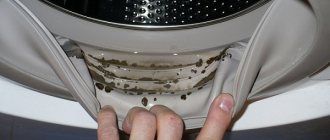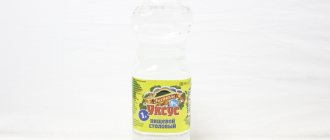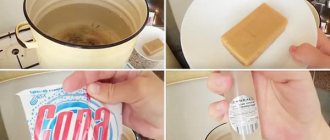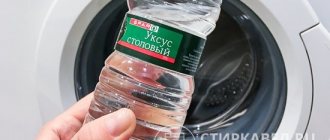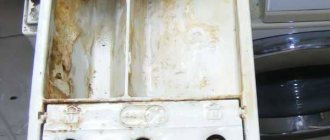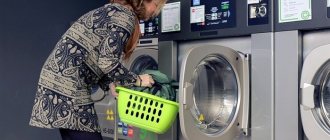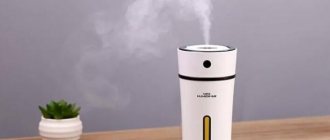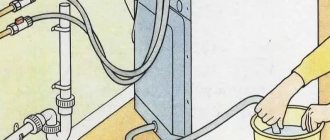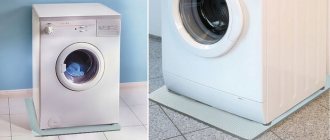Any washing machine needs special care. In addition to taking good care of your equipment, regular cleaning is recommended. Many people use expensive purchased products for this purpose, while others successfully use traditional methods. Cleaning a washing machine with soda is a procedure that can easily be done at home. Many people find it a simple and effective way to get rid of plaque and dirt.
Why soda?
Baking soda is a universal cleaning agent whose use is not limited. The substance is used in cooking, for cleaning kitchen utensils, for removing stains during washing, or for bleaching things. Soda is also used to clean the parts of automatic washing machines from limescale.
Sodium bicarbonate is an excellent adsorbent that can be used to clean grease and dirt. In the alkaline environment created by soda, most bacteria cannot reproduce and exist.
With the help of soda, calcium salts and other negatively affecting impurities in water are neutralized, making it softer. Baking soda is a relatively gentle product, non-toxic, and dissolves scale, mucus and grease that accumulate over time while using the washing machine. To clean and disinfect the device, you can use ordinary baking soda. When professional and deep cleaning of the washing machine with soda is required, the choice is made of soda ash, taking into account the fact that this type of substance is more aggressive and contains strong alkalis. There is also caustic soda, which is used in industrial enterprises, and which has pronounced alkaline properties.
This is interesting: Dishwasher salt: how to choose the best option
What types of dirt can be removed with soda?
Baking soda is an all-purpose bleach. It helps give a fresh look to yellowed and grayed things. Also removes the following types of stains:
- alcoholic drinks;
- blood;
- fat;
- grass;
- sweat;
- paint;
- iodine, etc.
Sodium carbonic acid cleanses workwear well. It removes traces of fuel oil, gasoline and paraffin without difficulty.
Employees of catering establishments keep a pack of powder nearby to quickly get rid of traces of sauce, cream, etc.
How to proceed?
This type of washing is performed in idle mode, and vinegar is not mixed with soda: a pre-prepared mixture of soda and water is added to the loading hopper of the washing machine, and vinegar is added to the tank. After that, set the longest mode and maximum temperature. Upon completion, repeat the steps from the previous instructions, starting from step 8.
How to descale your washing machine with soda and vinegar
Reviews
Galina, 48 years old. I make a gel from laundry soda and Antipyatin. It is convenient to use when washing in a machine; I add it directly to the drum.
Daria, 35 years old. I put a wine stain on my white blouse. I decided to try to remove it with peroxide and soda. I left the mixture overnight, washed it in the morning, and the blouse was like new.
Anastasia, 41 years old. I completely replaced the powder with a homemade one made from soda and soap. It is very economical and washes better than all store-bought products.
How to bleach sneakers and sneakers with soda.
Eliminating unpleasant odor
One of the signs of a clogged washing machine is the appearance of an odor due to bacteria and mold. The source must be removed. Baking soda is good for removing mold buildup. Mix it with vinegar in a one to one ratio. Wipe the parts where the risk of mold colonies is especially high: seal (cuff), drum, powder container.
Microorganisms that settle inside the machine release substances that have an unpleasant odor.
Their reproduction is due to the following reasons:
- incomplete drainage of water after washing;
- setting low temperatures when washing clothes;
- use of low-quality washing powders;
- use of hard water;
- incorrect connection of the drain hose to the sewer.
Limescale deposits can also give off an unpleasant odor.
To avoid having to take your car for repairs, clean its working parts regularly
How to Determine When Cleaning Is Needed
Regular monthly cleaning is the key to long and trouble-free service of the automatic machine.
If cleaning is necessary, this can be determined by characteristic signs:
- Unpleasant odor;
- Longer wash cycle;
- Excessive noise during operation;
- Unexpected outages;
- Poor quality washing.
All this indicates that your home appliance is in desperate need of care and attention.
To clean scale and mold, you can use both store-bought and homemade products. Despite their obvious cheapness and availability, folk chemistry is not always absolutely harmless to technology.
The most common are baking soda and citric acid. Let's consider their positive effects and negative factors limiting their use.
How to clean a washing machine
It is recommended to clean the device every 3-6 months
To achieve the desired effect, cleaning the washing machine is carried out according to a certain algorithm - first remove dirt in accessible places, then “drive” the device with a cleaning agent, wipe it from the outside.
Pre-cleaning
The drain filter collects dirt, hair, and various objects such as coins
Automatic washing machines are equipped with two filters, one of which is located on the back of the body. The second is located at the bottom right and is closed with a lid. Before starting the procedure, it is better to stock up on a bucket and a rag - there is always a small amount of water left in the compartment. Remove the filter, clean it of small objects, hair, debris, and wipe with a damp cloth. After this, return the parts to their place and screw on the lid.
In addition to the filter, you need to clean the detergent compartment, where powder deposits accumulate. It is taken out, cleaned well with a sponge using a cleaning agent, and then washed under running water. Mold often forms in this part of the machine - if black or gray stains are visible on the surface, the part must be placed in a container, covered with powder, filled with water and left overnight. In the morning, clean the compartment (it is convenient to use a toothbrush), wipe it thoroughly with a damp and dry cloth.
The inlet hose filter is located on the rear panel
The second filter (inlet hose) is usually located on the back of the housing, and it needs to be cleaned every six months. To do this, turn off the cold water access valve (required), and then perform the following actions:
- unfold the device to gain access to the reverse side - the inlet hose is located in the upper part of the body;
- unscrew the nut holding the parts so that the filter with the mesh opens - carefully remove it using pliers;
- Clean the filter with a toothbrush and rinse under running water;
- insert the element into place , screw on the inlet hose, turn on the water supply.
Some machines have a special design with a non-standard arrangement of elements. If you cannot remove the filter yourself, it is better to contact a specialist. It is strictly not recommended to unscrew machine parts yourself without knowing their purpose, otherwise the device will break down or cause a flood.
Video - How to properly clean the filter on a washing machine
Cleaning the heating element
Prices for heating elements for a washing machine
Heating element for washing machine
The heating element is a key part of the device responsible for heating water
The second step, the key step to a perfectly clean washing machine, is to clean the heating elements and drum from limescale. The simplest remedy for this is citric acid. The amount of powder depends on the volume of the drum, but usually 2-3 bags (about 100 g) are enough. The calculation is made based on the load of the machine - 100 g 6 kg of laundry . The cleaning procedure is simple and does not require additional costs or special skills.
Table 2. Instructions for cleaning a washing machine with citric acid
After the procedure, it is necessary to clean the drain filter again, as pieces of scale remain in it. Citric acid can be replaced with other means or combined with each other. The following solutions are used to combat limescale:
- 2 glasses of 9% vinegar , washing mode with a temperature no higher than 60 degrees ;
- 100 ml of whiteness (30 minutes of “idle” washing is enough);
- 100 ml of white and 100 ml of citric acid (white is poured into the drum, and citric acid is poured into the powder tray);
- 100 g of copper sulfate diluted with 100 g of warm water - the method is used for intense stains that cannot be removed by other means.
Citric acid is mixed with vinegar, soda, and bleach for greater effect.
The reaction when combining substances can produce caustic fumes, so during the procedure you need to keep the door open or turn on the hood.
Important! You can clean washing machines with citric acid, vinegar or other means only when the drum is empty , otherwise aggressive substances will damage the fabrics, ruining the clothes.
Video - Cleaning a washing machine with citric acid
Cleaning rubber parts
A lot of dirt accumulates at the bottom of the seal
The rubber cuff on the door can become a breeding ground for mold, mildew and pathogenic microorganisms, so it must be cleaned no less thoroughly than the heating element. To do this, use any surface cleaning products (Silit, Comet, etc.) or the folk remedies mentioned above - citric acid, soda or vinegar, and in case of intense contamination, copper sulfate .
Copper sulfate copes with the most difficult stains
Prepare an aqueous solution from citric acid or soda in a 1 to 1 . Apply it to rubber parts and rub. If no dirt is visible, you can wipe the seal and do a normal wash. In cases where mold remains on the surface, it is necessary to leave the product for 6-8 hours , then start any mode, and wipe the parts when finished. The seal must be cleaned thoroughly, especially at the bottom, where the largest amount of dirt accumulates. You don’t need to pull the material too hard, otherwise you may damage the part, which will require replacement.
When there is a large amount of dirt and mold, copper sulfate is used. It is diluted with water 1 to 1 , wipe the rubber cuff and leave for 12 hours . After this, wipe off any remaining dirt with a rag and start a test wash.
Attention! Before cleaning the body and other external elements of the machine, it must be disconnected from the network . Touching metal parts of a connected device is extremely dangerous.
Cleaning the Case
The powder tray, housing, glass hatch also need to be cleaned
The machine body can be washed with dish soap. If there are complex stains on the surface, they are lubricated with a paste of soda and water, left for 20-30 minutes , after which the dirt is easily removed. After washing, the body is wiped with a wet rag without any detergent, and then with a dry rag - it is better to use microfiber, which completely absorbs moisture.
Scale and chemicals for its removal
An alcohol-based glass cleaner is used to clean the transparent “window” on the door. It is sprayed onto the glass and the surface is thoroughly wiped with a dry cloth. The procedure is repeated until the surface shines.
Assistant in the fight against scale
Limescale deposits often form on the washer's garbage filter. The part is very easy to clean using soda ash. It is easy to remove the filter element from the machine body; any housewife can cope with this task. The algorithm of actions will be as follows:
- Turn off the power to the machine, turn off the water supply tap;
- remove the lower false panel covering the filter, or open the special protective hatch (depending on the design of the washing machine);
- place a low basin under the body of the machine; it will be needed to collect the liquid that will flow when unscrewing the cap;
- cover the floor near the equipment with dry rags;
- Unscrew the plug halfway, drain the water into a container, and pull out the filter completely.
Next you can start cleaning. There are two ways to wash the garbage filter using sodium carbonate:
- add 4 tbsp. spoons of soda in 1 liter of water, stir, soak the filter element in the solution. Wait until the coating “moves away” from the part, then rinse the filter and wipe with a dry cloth;
- Clean off the scale manually: sprinkle powder on the surface of the part and wipe off the deposit with a rag. Then rinse the element in warm water and dry.
Also, with a napkin soaked in a soda solution, you need to wipe the walls of the hole where the filter is screwed into. Afterwards you can put the filter element in place. Make sure that the plug “stands up” evenly, otherwise the machine will begin to leak during the first wash.
Using baking soda when washing
Quite often, Na2CO3 alkali is used to remove stains on clothes. To do this, soda can be added directly to the washing powder when putting the laundry in the drum. This is a suitable method for linen and cotton items. Under no circumstances should you add alkali when washing woolen and silk items. It is also not recommended to do this when washing items with a special membrane coating.
If the water used for washing is of medium hardness, then experts recommend adding two to three tablespoons of soda. At the same time, it can be poured directly into the drum with things. If the water hardness is very high, then you need to add about five tablespoons of soda.
It should be remembered that the water temperature when washing must be at least 50 ºC.
To achieve a better effect, baking soda can be poured into water when soaking. For this purpose, three tablespoons are dissolved in ten liters of water at a temperature of at least 40 ºC. Things are soaked for two to three hours, after which you can wash them by hand or in a washing machine.
Soda ash will effectively clean, whiten and remove stains from kitchen towels. To do this, four spoons of alkali are mixed with shavings of laundry soap. This mixture is diluted with water in an enamel container. The container must be filled halfway with water. After the mixture has completely dissolved, soak kitchen towels in water and put on fire. Boil towels for about twenty minutes. After which they can be washed in the washing machine.
Soda ash is sold in most retail outlets in specialized departments, in the same place where other household chemicals for the home are sold.
Baking soda is a universal solution for impeccable housekeeping. They can wash laundry, clean any kitchen surface, and remove unpleasant odors. Don’t forget to clean the drain filter of your washing machine at least once a month, as it often becomes clogged with threads, hair, limescale and other small things. Now you know how to clean a washing machine with soda, and we hope that this article helped make your assistant clean.
- 10 best washing machines from Samsung
- 10 Best Top Loading Washing Machines
- 10 best Hotpoint-Ariston washing machines according to customer reviews
- 10 best Electrolux washing machines according to customer reviews
- 10 best ATLANT washing machines according to customer reviews
This is interesting: How to clean a dishwasher at home
Combine baking soda and vinegar essence
Vinegar, which can be found in any housewife’s kitchen, will be a good assistant for baking soda. The essence will enhance the effect of sodium carbonate and complement its beneficial properties. To clean the washer you will need nine percent acetic acid. To prepare the solution you need to take:
- glass of water;
- 250 grams of soda.
In addition, you will need a sponge with an abrasive surface and two glasses of 9% vinegar. Soda ash is mixed with water, the resulting liquid must be poured into a detergent cuvette. However, before this, it is better to clean the tray itself by wiping it with a “washcloth” soaked in a soda solution.
When the powder dispenser is clean, you need to pour the resulting solution into it. Two glasses of acetic acid (500 ml to be precise) are poured into the drum. Then you should run a high-temperature washing program lasting at least two hours. After the procedure, the washing machine will shine clean from the inside. If necessary, this wash can be done twice in a row to achieve maximum effect.
Preventive measures
By forgetting to clean your washing machine regularly, you increase the risk of plaque and mildew. The machine may fail before the end of its service life. To increase the service life of the machine, do not forget to clean it at home with soda and vinegar. To avoid unpleasant odors, remember the following steps:
- Try not to pour too much detergent: this will not help to wash things perfectly, and the remaining powder will settle on the walls inside.
- Do not keep the machine loaded with dirty laundry for a long time.
- Start the process immediately after downloading.
- After washing, remove items and do not leave them wet inside the drum.
- Open the machine periodically to dry it.
To prevent the appearance of scale and limescale, do not forget:
- Wipe accessible parts dry each time after washing.
- Place a good filter at the water inlet to the apartment so that liquid without impurities enters the drum.
- Before washing, remove all small items from your pockets and fasten zippers and buttons.
- Do not place old, worn-out items in the machine.
- Do not wash jackets and sweaters that are too fluffy.
- Periodically turn on the machine without laundry, pour a little powder into the tray, and run it empty.
Video: cleaning a washing machine at home
Video: harm of citric acid for a machine - expert’s opinion
Precautionary measures
- The powder has a strong fat-soluble and dehydrating effect, so in high concentrations it can form an alkaline burn. From contact with it, the wound begins to burn and sting.
- Alkali dries the skin, so rubber gloves are needed when working with it.
- The pack is stored tightly closed away from food products, in a dry place (to avoid lumps and caking), inaccessible to children and pets.
- The higher the temperature of the liquid, the more active the substance is. The same amount of sodium carbonate, which was comfortable to wash with in cool water, can cause irritation in hot water.
- Sodium carbonic acid belongs to the third hazard class. It is used with caution in rooms with high humidity.
Expert recommendations
To prevent mold and unpleasant odors from appearing in the washing machine, it must be washed regularly inside and out. It is believed that household chemical products have a detrimental effect on human health. Therefore, it is worth considering using affordable and safe soda as a cleaning agent. Remember, that:
- If you wipe the car panel with a cloth that is too wet, you can damage the electronics.
- Washing items with lint must be done in a special bag.
- Do not leave wet clothes in the drum for a long time.
- A washing machine installed in the kitchen needs timely cleaning from splashes of grease and water drips.
In order to avoid incurring unplanned expenses due to an unexpectedly broken washing machine, it is necessary to regularly clean it of accumulated dirt. This will extend the life of the equipment and protect the family from the influence of pathogenic bacteria. Baking soda is an inexpensive, but effective and multifunctional product for keeping your home clean.
Video
Which one should you choose?
Any type of soda is suitable for cleaning and washing fabrics. Which one to choose depends on the intended purpose, the degree of contamination of the item and the composition of the fabric.
Food grade - works great where radical whitening is not required . This is an ideal solution for colored items that need to soften and eliminate unpleasant odors.
Soda ash is several times more concentrated. It can remove difficult to remove stains - grease, tea, coffee, and also return the fabric to its former whiteness.
